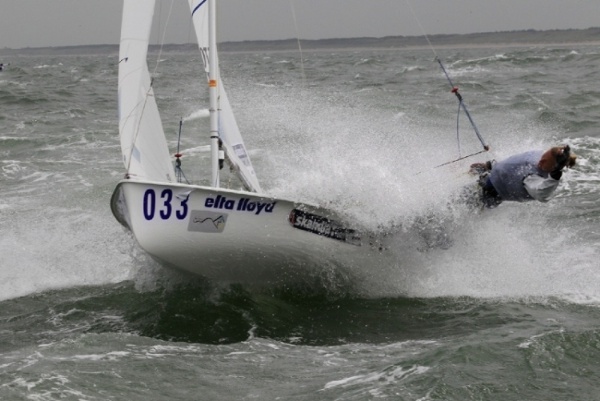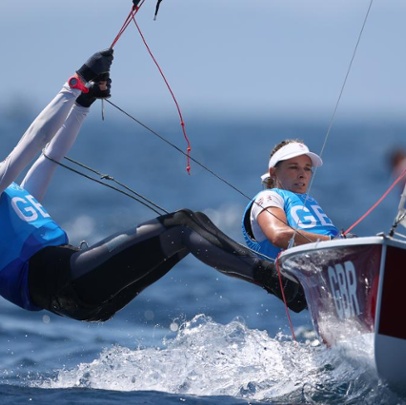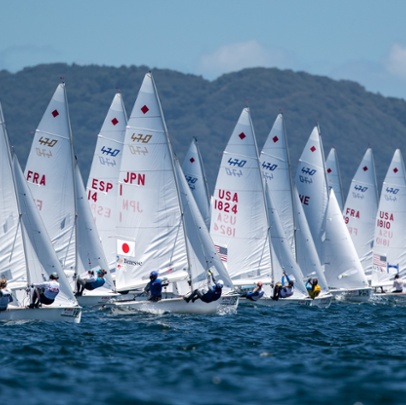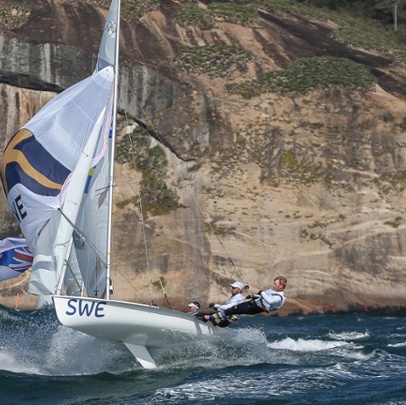The 470
Harnessing technical, tactical and athletic performance, all in one package.
Since our first build in 1993, a Mackay built 470 has helped produce Olympic glory and world champion sailors year on year.
Find out more in the Features section below
Specifications
Hull Length 4.7
Beam Length 1.7
Mainsail Area 9.45 m2
Headsail Area 3.59 m2
Spinnaker Area 12.16 m2
Boat Weight 120 kg
Number of Trapeze Single
Year of status 1969
Type Centreboard Boat
No. of Crew 2
Opt Crew Weight 110 - 145
Hull Material GRP
The 470 is a double handed, mixed crew Olympic yacht.
470 Class Association website : http://www.470.org/
The Boat
The 470 is a light and narrow boat (length 4.7m and beam 1.7m with a weight of 120kg), that responds easily and immediately to body movement.
The skipper is normally smaller and lighter (1.65m to 1.8m and 55kg to 65kg) and the crew is taller (1.75m to 1.85m yet only 65kg -75kg). The crew's build lets him or her hang far out on the trapeze to keep the boat level in all conditions.
Since our first build in 1993, a Mackay built 470 has helped produce Olympic glory and world champion sailors year on year. Over the years we have refined our knowledge on what makes this boat go fast.
The Hull
Our boats have a reputation for high strength and stiffness. We focus on these two areas so that the boat will hold high rig tension and not flex in the bow and mid sections.
It also means that the tune of the boat will not change through a season of racing so that the rig tensions and mast bends will not alter as the season progresses.
In 2018 we produced a new mould which we believe is the ultimate for a mixed crew combination heading to Paris 2024.
The mould is designed to maximise the energy from body pumping while also making the boat easy to sail. It was designed with help from sailors, Nathan Wilmont and Jo Aleh, who worked alongside our navel architect, Kevin Trotter.
Part of the success with our latest design comes from adding a little bouyancy in the back of the boat which will make it easier to steer in waves and easier to catch small waves downwind. Bouyancy is also added in the front to balance the changes in the stern.
All of the ribs on our boats are vacuum clamped foam with chopped mat and uni-directional rovings on top. We obtain extra strength from the rigidity of the foam itself.
The construction techniques we use give greater longevity and therefore eliminate the need to replace the boat every year or two. We believe that our construction techniques are as advanced as allowed by the rules.
The building process also involves a considerable amount of custom workmanship. We concentrate on building fewer boats but of a very high quality. We have placed the greatest importance on workmanship, care and attention to detail.
International 470 Class History
In 1963, French architect Andre Cornu designed the two-handed centerboard boat as a modern high performance fiberglass planing dinghy which could be sailed by anyone. And the craft so influenced European sailing that the 470 is directly credited with drawing new sailors to the sport during the 1960s and '70s.
The 470 has been an Olympic class boat since 1976. It is sailed today for both family recreation and superior competition by more than 30,000 sailors in 42 countries worldwide.
In 1988, women officially entered Olympic sailing competition with the first-ever 470 Women's event. This boat is especially well-suited to women's competition because of its light weight, maneuverability and light crew weight requirement.
Click here to view more information on the history of the 470.
Yes. Nearly all 470 are customised to suit your own preferences.
We offer options for most control systems on the boats. Go to our 470 order form to see the options available. International 470 Package - Mackay Boats - NZL
Yes. Many teams send us pictures with their own personal systems for us to copy.
All teams have something slightly different, but generally most top teams choose the continuous rig tension system (Option c) , the 4:1 up with 2:1 down centreboard system (Option a) and the carbon jib brackets. These are the only 2 systems that most top teams have in common.
Small gel coat repairs are relatively easy to do.
What is Gelcoat made up of?
Gelcoat is a polyester product that is cured by using a catalyst called MEKP. (Methyl Ethyl Ketone Peroxide)
MEKP is a dangerous substance and should be treated as such when using, being very careful not to get any on your skin or in your eyes.
How can I get the catalyst - MERK?
We cannot ship MEKP so you will always need to buy it separately from your local marine store or fibreglass manufacturer.
How much MERK do I need?
The amount of Catalyst varies depending on the conditions you are using it in, but around 2%-3% will always work.
It is best to use a small syringe or dropper to get the required catalyst rate.
If you have mixed 100gm of gelcoat, then you are aiming for 2ml of catalyst.
What are the Gelcoat colours?
Gelcoats colours are not always a 100% perfect match.
Colour will vary depending on the depth of the repair and the batch.
470 White- LS30 White PA 337
470 Grey- Grey RAL 7035
Blue = is supplier by Nuplex who have their own code which is not an international code
Does Mackay Boats supply gelcoat?
We supply a small tin (of each relevant colour) with each new boat.
Order additional gelcoat from our store, although it cannot be shipped by courier.
How do I do gelcoat repairs?
Doing gelcoat repairs is an art that improves with experience.
Making sure the surface is prepared well and keyed up is critical.
Overfill and then sanding back is a slow and time-consuming process.
Be very careful not to scratch the boat around the repair.
You shouldn’t sand the original surface around the repair with any paper coarser than 600grit.
Mask around the repair to protect the boat.
You can initially use a file or 150g to take the high parts off the filling, but don't use the coarse paper for too long or you will end up with scratches in the finished repair.
Once you have it fair with 600g, you can work your way through the sandpaper grades until you finish with 1500grit before cutting and polishing.
We would typically use 600g, then 800g or 1000g, then 1200g, then finally 1500g.
Please watch a demonstration: Fitting a mylar gasket








